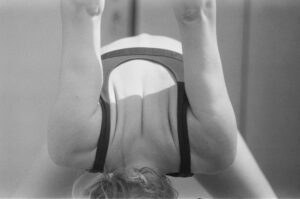
Joseph Pilates, a visionary and pioneer, holds a significant place in the world of fitness and well-being. His innovative approach to exercise and movement, known as Pilates, has transformed countless lives and continues to be embraced by individuals seeking physical strength, flexibility, and mental balance. In this article, we delve into the history of Joseph Pilates, explore the origins of Pilates, uncover the purpose behind his method, and discuss the invention of the reformer.
What is the history of Joseph Pilates?
Joseph Pilates was born in Germany in 1883 and developed a deep fascination with physical fitness from an early age. Drawing inspiration from diverse disciplines such as yoga, martial arts, and gymnastics, Pilates dedicated his life to understanding the human body’s potential for strength and movement. During World War I, he worked as a nurse, where he developed a system of exercises to aid in the rehabilitation of injured soldiers. This marked a pivotal moment in the evolution of Pilates, as he began to refine his methods and principles. Later, Pilates migrated to the United States and established a studio in New York City, where his unique approach gained recognition and popularity.
Who was the founder of Pilates?
Joseph Pilates, often referred to as Joe, is the visionary and founder of the Pilates method. His relentless pursuit of physical and mental well-being led him to develop a holistic system that integrated mind, body, and spirit. Pilates’ deep understanding of movement, combined with his studies in Eastern and Western exercise philosophies, enabled him to create a transformative fitness discipline that would revolutionize the way people approached their physical fitness goals. Through his teachings, he inspired a generation of instructors who carried his legacy forward and ensured the enduring impact of his method.
What is the main purpose of Pilates?
The main purpose of Pilates is to cultivate strength, flexibility, and balance in both the body and the mind. Pilates seeks to create a harmonious connection between the physical and mental aspects of well-being. By focusing on core strength, proper alignment, and controlled movements, Pilates aims to improve posture, increase body awareness, and develop a strong foundation for overall fitness. It emphasizes the importance of breath control, concentration, precision, and flowing movements to achieve optimal results. Additionally, Pilates promotes a mindful approach to exercise, fostering relaxation, stress reduction, and mental clarity. The holistic nature of Pilates allows individuals to build a strong, balanced body while nurturing a sense of overall well-being.
Why did Joseph Pilates invent the reformer?
Joseph Pilates invented the reformer, a specialized piece of equipment, to enhance and deepen the practice of his method. The reformer consists of a moving carriage, springs, and various attachments that allow for resistance-based exercises. Pilates recognized that by incorporating resistance training, he could provide additional challenges and variations to his students, promoting increased strength and muscular engagement. The reformer also offers support and assistance for those recovering from injuries or with limited mobility, making Pilates accessible to a wider range of individuals. With its ability to target specific muscle groups and provide a low-impact workout, the reformer has become an integral part of the Pilates repertoire, enabling practitioners to further refine their technique and achieve optimal results.
Joseph Pilates, the visionary founder of Pilates, revolutionized the world of fitness and well-being through his innovative approach. With a deep understanding of movement and a fusion of Eastern and Western exercise philosophies, Pilates created a holistic method that focuses on strength, flexibility, and mental balance. His legacy lives on through the countless individuals who have